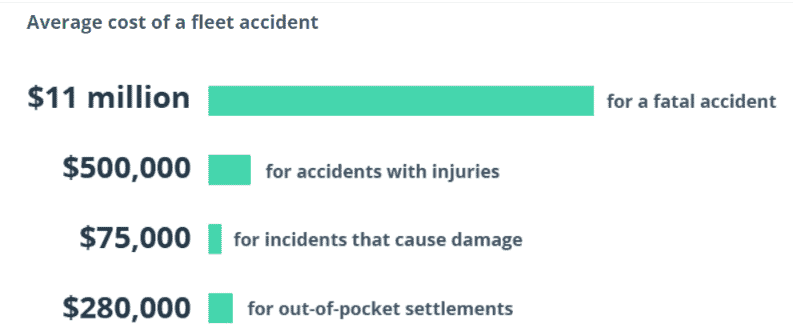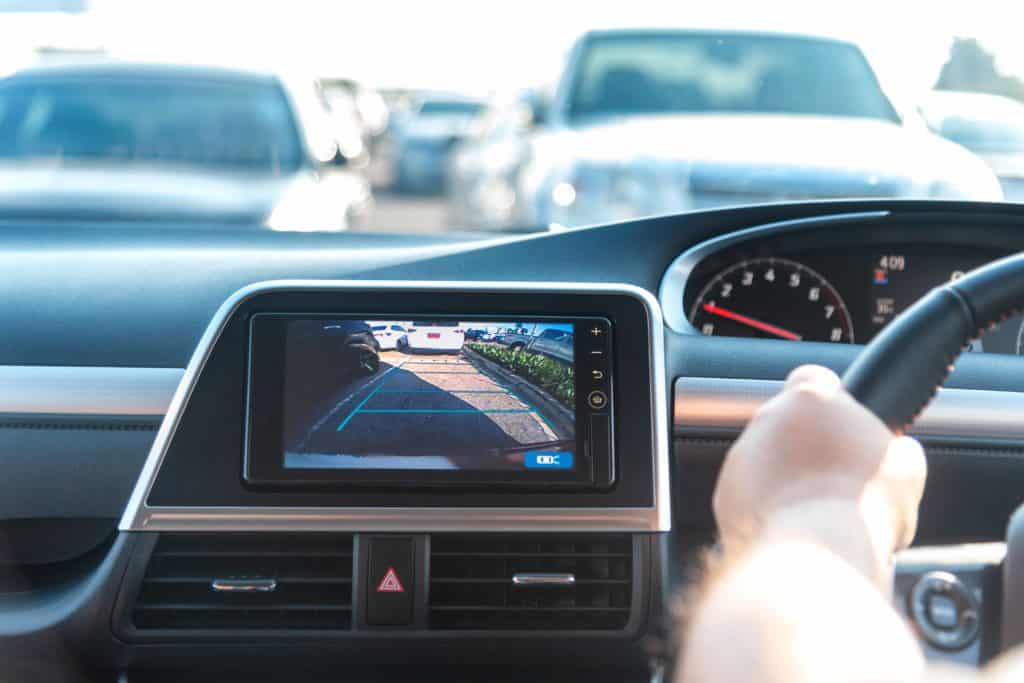Fleet vehicles are used in a wide range of industries, with millions of businesses relying on them every single day.
With the increasing globalization of the economy, more businesses rely on fleet vehicle operators for transporting their goods across long distances. For this reason, transportation companies are the lifeblood of this country and it’s important that fleet vehicle operators operate these vehicles safely so they don’t put themselves and other drivers or pedestrians at risk by driving erratically or unsafely.
When accidents eventually occur due to safety risks, the cost associated with repairs can be substantial. In the unfortunate event of a death, the costs could be enough to shut down a business. This is why fleet managers need to do everything they can in order to prevent unsafe driving practices by their fleet drivers as well as have evidence to protect their own fleet.

Many drivers on the road today don’t know the true extent of the safety requirements or qualifications that are required for a commercial fleet vehicle operator. It’s up to the business to make sure their drivers are up to speed and following protocols.
One of the best ways to stay on top of everything is by utilizing video. Integrated video solutions that utilize AI can help businesses protect their reputation while promoting a decreased workload.
In this article we’ll discuss how video can help fleet managers monitor their fleets and what causes the unsafe operation of fleet vehicles.
Table of Contents
How Video Monitoring Can Prevent Unsafe Driving of Fleet Vehicles
FORWARD MONITORING
With forward monitoring, you’re able to record what’s ahead, but more importantly, video allows you to analyze the road conditions ahead. This can come in handy for more inexperienced drivers.
SIDE MONITORING
When it comes to side monitoring, there are two different options. The first option is to record what’s going on on the left and right sides of the vehicle. The second option is to record only one side, which can be useful for drivers who aren’t driving in heavy traffic.
Either way, video side monitoring will help to prevent unnecessary side-swiping incidents by allowing drivers to view hard to see angles.
REAR MONITORING
With rear video monitoring, fleet managers can review the trips of their drivers. This can help them to spot dangerous situations and prevent rear-end incidents. This type of video also highlights the importance of safe backing up and it can be used to help drivers improve their backup skills.

DRIVER MONITORING
Probably the most important, driver monitoring allows you to keep track of driving habits, performance and violations. This type of video monitoring is useful for keeping an eye on many things including:
- Aggressive Starts: Allowing you to see if the driver is behaving badly by speeding up too quickly.
- Aggressive Braking: Allows you to see if the driver is braking too hard which can injure other drivers by creating abrupt stops.
- Speeding: Allows you to see if the driver is speeding. If he or she is, you can take steps to correct the issue before it becomes a dangerous situation for other drivers or his/her own safety.
- Hours-of-Service compliance: Were FMCSA regulations violated and did the driver exceed the maximum allowable duty time thresholds?
- Traffic signs and lights: If the driver were to violate a traffic sign or light, you can see it and so can the law enforcement agencies.
- Driver day count: Is the driver on duty when expected to be? If so, review the video to ensure compliance.
- Aggressive lane changes: Video can help you to see if the driver is changing lanes quickly or without caution.
- Distracted Driving: This is a huge safety concern on the nation’s highways. You can see if the driver is distracted by talking on cell phones, texting, eating or any other activity.
What are the causes of the unsafe operation of fleet vehicles?
Fleet vehicle operators play an important role in not only transporting goods and materials, but also ensuring that they are transported safely. When accidents do occur due to unsafe operation of equipment, it can have a detrimental effect on an individual’s life and the lives of others around them. The following are some of the causes of unsafe operation:
1. Inadequate driving qualifications
Due to increased shipping, more businesses are in need of drivers to handle the increase in demand. For this reason, it’s important for fleet managers to ensure that their fleet operators have adequate qualifications in order to transport goods and materials safely, as well as the ability to deal with unexpected situations on the road.
According to one study that utilized video recordings to assess the primary causes of safety-critical events, the 20% of riskiest drivers on the road are roughly 3.9 to 4.9 times riskier compared to the other 80% of fleet drivers.
2. Lack of Training
Another cause of the unsafe operation of fleet vehicles is the lack of training for inexperienced drivers. Accidents can occur due to the inexperience of an operator. While hiring qualified drivers is important, it’s also important to provide adequate training and continuing education to your drivers. Use Greenzone Scorecard to identify common areas you can improve training with your drivers.

3. Complying with Industry Regulations
The inability to comply with industry regulations is another cause of the unsafe operation of fleet vehicles.
4. Vehicle maintenance
Managers must ensure that the vehicle operators complete regular preventive maintenance checks, such as fluid levels, tire pressure, front-end alignment and lubricating parts such as wheel bearings. It’s important that that vehicle operators know the importance of maintaining their fleet vehicles in a safe operating condition for drivers and pedestrians alike.
5. Equipment failure
Even newly purchased fleet vehicles can have shortcomings in their design, which can lead to accidents if not addressed in a timely manner. On average, around 2 percent of all fleet crashes are attributed each year to equipment failure either due to bad tires or a malfunctioned engine or transmission system.
There are many different causes that lead to the unsafe operation of fleet vehicles. By utilizing smart video with your fleet, you’re able to monitor and prevent all of the above as well as easily identify problem areas to improve.
Conclusion

Video can be a great tool for fleet managers and Owner-Operators to avoid accidents and keep their drivers safe. Video has served as the fastest way to document an incident so that there’s more accountability on the part of the fleet operators.
It is also a great tool for monitoring driver behavior and to help your organization implement better driver practices to help reduce safety events and accidents on the road.
